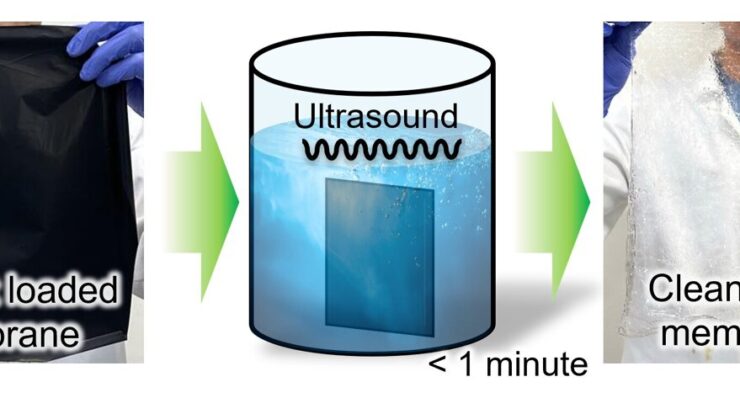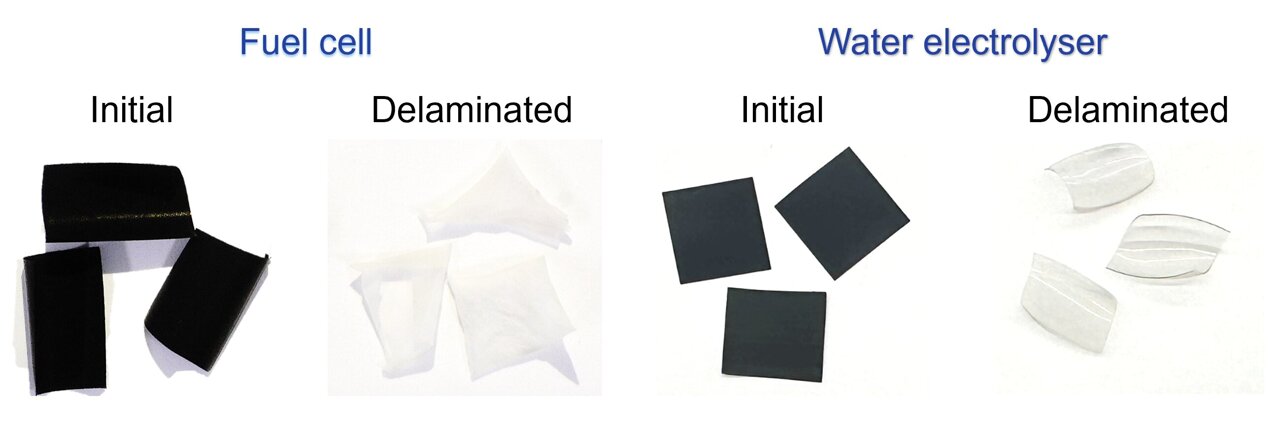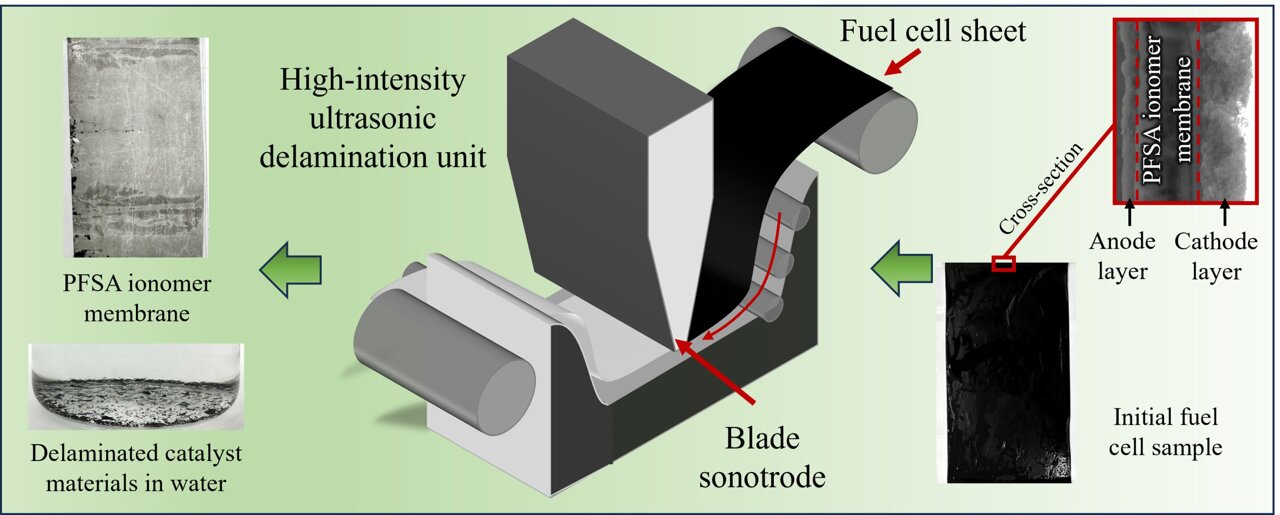
A novel method employing sound waves to segregate materials during recycling might aid in stopping hazardous substances from seeping into the ecosystem.
Scientists at the University of Leicester have made significant progress in fuel cell recycling by developing methods to effectively isolate precious catalyst substances and fluorinated polymer membranes (PFAS) from catalyst-coated membranes (CCMs). These findings are detailed in published papers.
RSC Sustainability
and
Ultrasonic Sonochemistry
.

This advancement tackles significant environmental issues caused by PFAS—commonly called “Forever Chemicals.” These substances can pollute drinking water and pose severe health risks.
Royal Society of Chemistry
Has called for governmental action to lower PFAS concentrations in British water systems.

Fuel cells and water electrolyzers, essential components of hydrogen-powered energy systems, powering cars, trains and buses, depend on CCMs containing precious platinum group metals. However, the strong adhesion between catalyst layers and PFAS membranes has made recycling difficult.
Scientists at Leicester have created a scalable technique involving organic solvent immersion and water ultrasonication for efficiently separating these materials, transforming the recycling process.
Dr. Jake Yang from the University of Leicester’s School of Chemistry remarked, “This technique is straightforward and expandable. We can now extract PFAS membranes from valuable metals without using aggressive substances—transforming the way we recycle fuel cells.”
“Fuel cells have been heralded for a long time as the breakthrough technology for clean energy but the high cost of platinum group metals has been seen as a limitation. A circular economy in these metals will bring this breakthrough technology one step closer to reality.”
Following this achievement, a subsequent study implemented a continuous delamination method with a custom-designed blade sonotrode. This device employs high-frequency ultrasonic waves to separate the layers of the membrane, thus speeding up the recycling process. During this procedure, bubbles form and implode under intense pressure, allowing valuable catalysts to be isolated within mere seconds at ambient temperatures. This cutting-edge technique not only supports environmental sustainability but also offers economic feasibility, setting the stage for broader implementation across industries.
This study was conducted in partnership with Johnson Matthey, a world leader in sustainable technologies. Such collaborations between industry and academia highlight the significance of joint endeavors in advancing technology.
Ross Gordon, Principal Research Scientist at Johnson Matthey, commented, “The innovation of using high-intensity ultrasound for separating catalyst-loaded membranes represents a significant shift in our strategy for fuel cell recycling. We at Johnson Matthey are delighted to be part of groundbreaking efforts that speed up the implementation of hydrogen-based energy systems, enhancing both their sustainability and economic feasibility.”
With the increasing demand for fuel cells, this innovation bolsters the circular economy by facilitating the effective reuse of vital elements found in clean energy systems. This research paves the way toward a more sustainable and cost-effective future for fuel cell technology, tackling significant ecological issues simultaneously.
More information:
Tanongsak Ying nakorn et al., studied catalyst-coated membranes in fuel cells and water electrolysers experiencing delamination due to exposure to organic solutions and ultrasound with water,
RSC Sustainability
(2025).
DOI: 10.1039/D4SU00795F
Tanongsak Yingnakorn et al., Rapid Detachment of Fuel Cell Catalyst-Coated Membranes Utilizing Intense Ultrasound Treatment,
Ultrasonics Sonochemistry
(2025).
DOI: 10.1016/j.ultsonch.2025.107330
Furnished by the University of Leicester
This tale was initially released on
Tech Xplore
. Subscribe to our
newsletter
For the most recent science and technology news updates.





